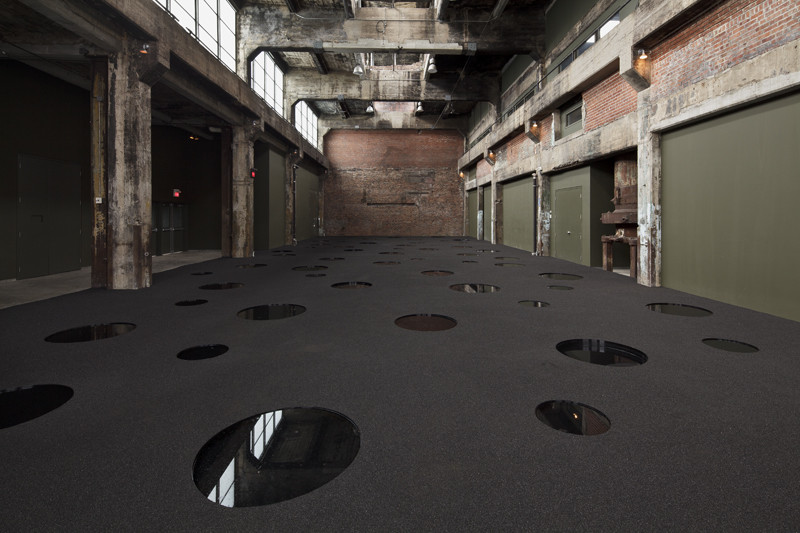
in collaboration with Malcolm Goldstein
Lani Maestro had the kindness to let me in on some of the thoughts that had been running through her mind as she prepared her work for Darling Foundry. She told me that its title, L’oubli de l’air—roughly, “the forgetfulness of air”—, had been inspired by a work of Luce Irigaray’s. She spoke to me of sand. Black sand, there, before us, on the ground. She spoke of water. Of small cavities dug into the sand and filled with pockets of water. She told me that the sky seen from the windows perched high in the lofty spaces of the Foundry would reflect in the pools. She spoke of a garden, while reminding me that water would tend to evaporate, that the little sand pools would have to be topped up—watering the garden, as it were. She told me of her meeting with Malcolm Goldstein, of the poetry of his music, of his participation in the project—though she didn’t precisely know what form that participation would take. The work would be the occasion (to take what form?) for an encounter between Maestro’s visual poetry and Goldstein’s sound poetry. Is that the be-all and end-all of L’oubli de l’air? No, not exclusively.
Two is significant in Maestro’s work. Maestro and Goldstein. The visible and audible. The sky, out there, and the sky here, in the water. Here within and there without. Water in the sand and water in the air. The silent air and the musical air. The sand here, now, in the exhibition space, and the sand then, when the sand technique was being used to mould the metal. Yes, metal was moulded here. Mould. Shell. Hollow. Fire. Heat. Noise. Memories, just memories. Deaths, too. Suffering. Gruelling work. Art, today, has taken its place. The Darling Foundry is also that. Ghosts. Something in the air one can’t forget on entering the venue. Repress, deny, reject, yes, but not forget. A kind of unintended tyranny demanded of this place. Imposed material, in a sense. To which Maestro adjoins freedom. The freedom that made her an artist.
Lani Maestro sculpts. She sculpts just these materials—the involuntarily tyrannical materials that can’t help but convey coercion, oppression, repression, domination, hegemony, the totalitarian. And how does she go about it? Not by opposing the freedom of doing. No. But by going on ahead, so to speak. She, with the materials themselves, digging in, nestling within them, and in so doing, breaching them. She, with that which is inalienable in her, i.e., that which makes her who she is, not subsumed by, under, in, on the confines of tyrannies, which have deeply marked her nonetheless.
Thus, often, very often, you’ll notice it now, Maestro constructs places within places. And between them, relationships, links, contacts. A line is thus built up, a line of silence she would say, because it isn’t language that builds it up, but only the obviousness. The obvious senselessness of the Unique. The senselessness of the unique idea, the only thought, the single form, the one material.
Her work should be seen as we see the horizon, where the infinite sky and sea appear to touch, though we know it is impossible. We should see it as that horizon where tyranny and the artist touch, without mixing, refer to each other, without corresponding, while adjoining, ostensibly however, for the good of the cause one might say. It takes place over there, so very far away from us. Infinitely far even: an art issue, so to speak, regarding the infinite struggle against the hegemony of the One. But it is happening for us. I am you, says she. Thus, the poetry. Lani Maestro’s poetry for us.
Jean-Émile Verdier
Translated by Ron Ross
Lani Maestro the Canada Council for the Arts for their financial support.
Lani Maestro
Lani Maestro was born in the Philippines in 1957. She came to Canada in 1983 and pursued an MFA at the Nova Scotia College for Art and Design.
